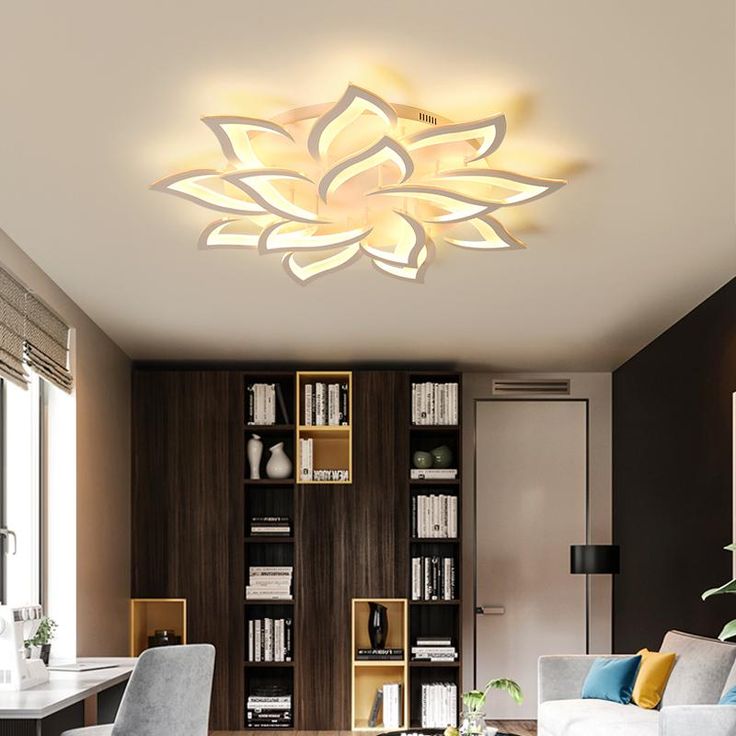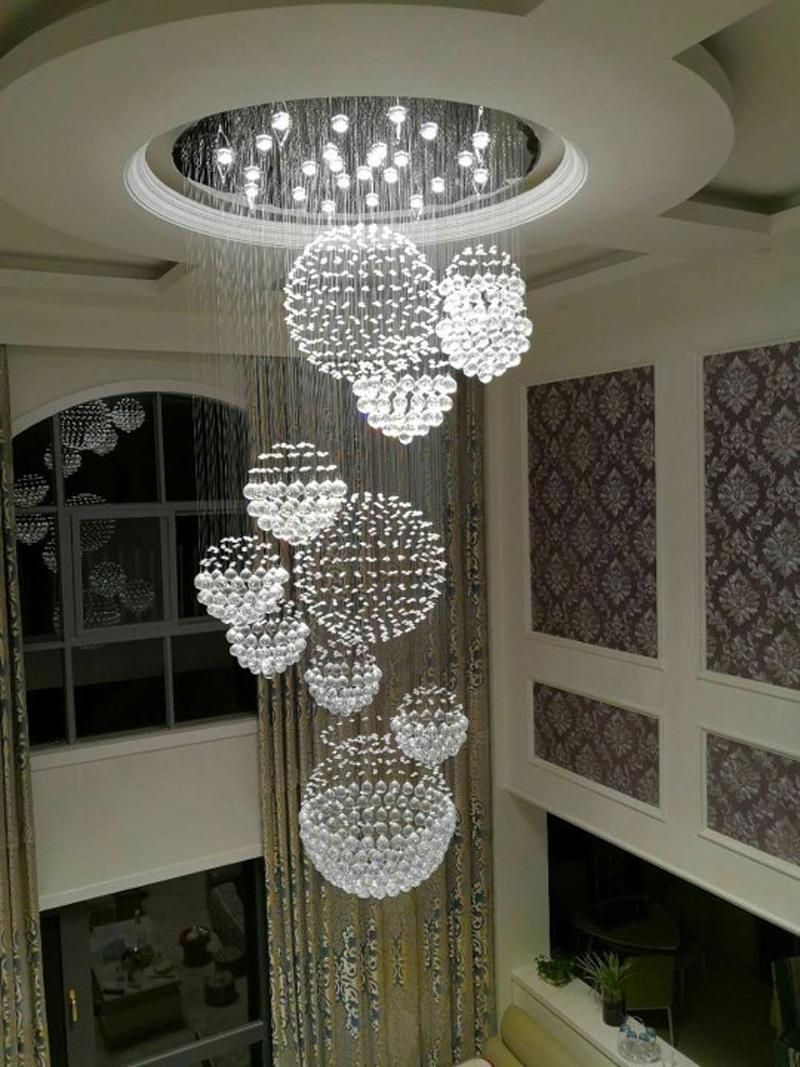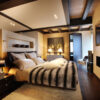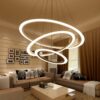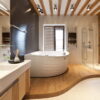Lighting design is an art that transcends mere illumination; it’s about crafting an environment that resonates with beauty, functionality, and comfort. “Illuminating Elegance: Mastering the Art of Lighting Design” explores how thoughtful lighting can transform spaces, enhance mood, and highlight the unique elements of your home. This article delves into the importance of lighting, various types and principles of lighting design, innovative trends, and practical tips to achieve a harmonious and stylish lighting scheme.
The Importance of Lighting in Interior Design
Creating Ambiance and Atmosphere
Lighting has the power to set the mood and create a specific atmosphere within a room. The right lighting can evoke feelings of warmth, relaxation, or energy, significantly impacting how we experience a space.
Key Points:
Mood Setting
Use lighting to create a welcoming or calming environment.
Atmosphere Enhancement
Adjust lighting to complement the room’s design and purpose.
Seasonal Adjustments
Modify lighting to suit seasonal changes and activities.
Quote
“Lighting is not just about visibility; it’s about creating a mood and atmosphere that reflects your personality and enhances your environment.”
Enhancing Functionality
Beyond aesthetics, lighting plays a crucial role in the functionality of a space. Proper lighting ensures that areas are well-lit for various tasks, improving usability and comfort.
Key Points:
Task Lighting
Focus on areas where specific tasks are performed, such as reading or cooking.
Safety and Navigation
Ensure adequate lighting in hallways, staircases, and entryways.
Flexibility
Incorporate adjustable lighting to cater to different activities and needs.
Quote
“Effective lighting design improves both the functionality and comfort of a space, ensuring it caters to the practical needs of its users.”
Highlighting Architectural Features
Lighting can accentuate architectural details and design elements, drawing attention to the unique features of a space. Strategic lighting highlights textures, shapes, and materials, adding depth and interest.
Key Points:
Architectural Accents
Use lighting to emphasize elements such as columns, moldings, and artwork.
Texture and Contrast
Illuminate textured surfaces to create visual contrast and depth.
Focal Points
Direct light to key areas to enhance their prominence and visual appeal.
Quote
“The right lighting can turn architectural features into focal points, showcasing the beauty and craftsmanship of a design.”
Types of Lighting
Ambient Lighting
Ambient lighting, also known as general lighting, provides overall illumination to a space, ensuring uniform light distribution.It acts as the main source of illumination in a room.
Key Points:
Even Illumination
Offers consistent light throughout the space.
Lighting Fixtures
Includes ceiling-mounted fixtures, chandeliers, and recessed lighting.
Purpose
Creates a base level of light that supports other types of lighting.
Example
“A well-designed ceiling fixture can provide ample ambient light while adding a touch of elegance to the room.”
Task Lighting
Task lighting is focused on specific areas where tasks are performed, such as reading, cooking, or working. It provides direct light to enhance visibility and reduce eye strain.
Key Points:
Focused Illumination
Targets areas where detailed work is done.
Types of Fixtures
Includes desk lamps, under-cabinet lighting, and pendant lights over workspaces.
Adjustability
Opt for adjustable fixtures to direct light where it’s needed most.
Example
Under-cabinet lighting in the kitchen offers crucial illumination for food preparation, ensuring a brightly lit workspace.
Accent Lighting
Accent lighting is used to highlight specific features or objects in a room, such as artwork, plants, or architectural elements. It creates visual interest and adds depth to the space.
Key Points:
Highlighting Features
Draws attention to particular elements within the room.
Types of Fixtures
Includes spotlights, wall washers, and track lighting.
Dramatic Effect
Adds contrast and visual appeal by creating shadows and highlights.
Example
Spotlights aimed at artwork can improve its visibility and create a dramatic effect in the room.
Decorative Lighting
Decorative lighting serves both functional and aesthetic purposes, adding a unique style to the space. It includes fixtures that contribute to the overall design of the room while providing light.
Key Points:
Design Element
Functions as both a light source and a decorative feature.
Types of Fixtures
Includes chandeliers, pendant lights, and decorative lamps.
Visual Appeal
Enhances the room’s design and adds a personal touch.
Example
A statement chandelier can serve as a focal point in a dining room, combining form and function in a striking way.
Lighting Design Principles
Layered Lighting
Layered lighting involves combining different types of lighting to create a well-balanced and dynamic illumination scheme. This approach adds depth and flexibility to the lighting design.
Key Points:
Three Layers
Integrate ambient, task, and accent lighting for a comprehensive lighting solution.
Flexibility
Allows for adjustments based on time of day or activity.
Balanced Illumination
Ensures that no area is too bright or too dark.
Example
A living room with layered lighting might include a central ceiling fixture for ambient light, reading lamps for task lighting, and wall sconces for accent lighting.
Lighting Zones
Creating lighting zones involves dividing a space into different areas, each with its own lighting needs and purposes. This technique helps to customize the lighting for various functions and activities.
Key Points:
Functional Zones
Define areas based on their use, such as dining, lounging, and working.
Custom Controls
Use separate switches or dimmers to control each zone independently.
Visual Separation
Enhance the distinction between different areas with varied lighting levels.
Example
In an open-plan living space, lighting zones can separate the dining area from the living area, creating distinct atmospheres for each function.
Color Temperature
Color temperature denotes the warmth or coolness of light, measured in Kelvin (K).It affects the mood and appearance of a room, influencing how colors and textures are perceived.
Key Points:
Warm Light
Spans from 2700K to 3000K, producing a warm and inviting ambiance.
Cool Light
Ranges from 4000K to 5000K, offering a bright and energizing effect.
Natural Light
Daylight color temperatures (5000K to 6500K) mimic natural light, enhancing visibility and color accuracy.
Example
Warm light is ideal for living rooms and bedrooms, while cool light works well in kitchens and workspaces for clarity and focus.
Innovative Lighting Trends
Smart Lighting Systems
Smart lighting systems offer advanced control and customization options, allowing users to adjust lighting through apps, voice commands, or automated schedules. These systems enhance convenience and energy efficiency.
Key Points:
Remote Control
Control lighting from anywhere using smartphones or voice commands.
Automation
Set schedules or triggers based on time, occupancy, or environmental conditions.
Customizable Settings
Adjust brightness, color, and scenes to suit different moods and activities.
Example
Smart bulbs that adjust color and intensity according to your mood or the time of day provide a tailored lighting experience.
Energy-Efficient Solutions
Energy-efficient lighting solutions reduce energy use and cut down on utility bills. Technologies such as LED and CFL bulbs are designed to last longer and use less power compared to traditional incandescent bulbs.


